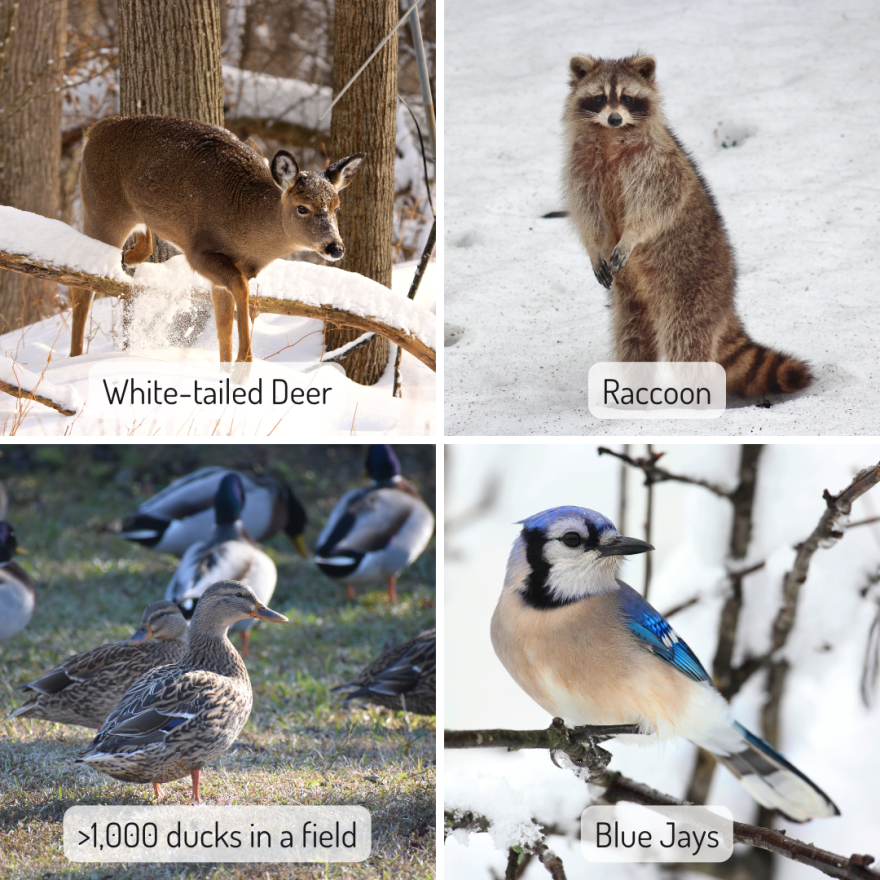This Covid is still kickin'! I hope to be back to regular articles next week. Until then, a (lightly edited) transcript! -SM
——-
<John pretends to get up to go get cookies>
Heidi Holtan:
No, not now! We have phenology, John!
John Latimer:
All right, time for phenology. Time for Phenology Talkback. This is your opportunity to get your voice out. This is community radio, and part of that community is you. And you can add your voice to the Morning Show! Every Tuesday morning, we talk about phenology with students from across the state, and we will add your voice to that list if you'd care to share. You can do that by getting in touch with us. You can send emails to comments@kaxe.org. You can send them to me, jlatimer@kaxe.org. You can record them on your smartphone and send them to those same addresses, and Sarah Mitchell (smitchell@kaxe.org). That’s probably the most appropriate place to send them, because Sarah is our tech and phenology guru. She is the phenology coordinator, and without her, none of this would be happening. [Thanks, buddy!] So, tune in and think about it. And, maybe with the coming of the new year, you would like to become one of those voices on Tuesday mornings. Funding for student phenology is provided in part by the Minnesota Environment and Natural Resources Trust Fund. And our first report today is from Briggham and Ayzlee, and they are from Collin Cody's class at West Rapids Elementary School.
Briggs and Ayzlee:
Hello, my name is Briggham (and Ayzlee), and this is our phenology report from Mr. Cody's fourth grade classroom at West Elementary School. The date was December 13th, 2022. It was windy, brisk, and cloudy. We saw several tracks including vole, mouse, squirrel, and fresh deer tracks. Mr. Latimer showed us how to tell mouse tracks from vole tracks: You look for the tail mark! There are a ton of squirrel tracks and sign. We saw what we believe was a hybrid maple. Mr. Latimer also showed us the red branches denoting birch trees. Lastly, we saw several snags, which becomes home for many species. Don't cut them down! “That’s all for now! Like Mr. Latimer says, ‘Onward and awkward,’ from Briggham and Ayzlee.”
John Latimer:
Thanks, Briggham and Ayzlee. Nice job. Yeah, snags! Snags are really important. There are lots of snags out there and especially where we walk and at my house. If you have an old dead tree that is kind of getting decrepit, if it's not going to fall on any property of yours (any real property, I mean like a building or a garage or your car,) just leave it because eventually it will come down. But in the meantime, hundreds of animals use those as homes, and so you just never know whose house you might be destroying when you take down one of those snags. Our next report comes from Arlo and Amelia from Michelle Martin's class at Prairie Creek Community School in Northfield.
Arlo and Amelia:
Hi, this is Arlo and this is Amelia from way down south in Northfield, Minnesota. There have been a lot of rabbits around. There have also been a lot of deer. Ruby saw a buck and Sylvia saw a doe. Eric saw a raccoon. We also saw a fox track. Kelly and Molly saw a field with over a thousand ducks on it. We have seen flocks of Cedar waxwings, juncos, chickadees, and Blue Jays. The Blue Jays have been very noisy. We haven't heard the pump-handle song yet. Michelle heard a Barred Owl calling. This is Prairie Creek Community School. “One more step along the phenology journey!”
John Latimer:
Nice. That's really nice. That is the Blue Jay ‘pump-handle’ song. It is a sign of spring, along with the chickadees singing their “Phoebe” song, and along with the woodpeckers starting to drum. These are all things that may be happening very soon in your neighborhood, and the kids down in Northfield will probably hear them before we do. But trust me, they'll be happening here just as readily and just as apparent as they will for the kids in Northfield. Once you kind of know the tune you can listen for it. And when you hear it, it's like they're beginning to tell you, “Spring is in the air.” You should be aware as well that this is the 20th of December and the days don't get much shorter than this! Eight hours and 15 minutes of daylight. Right now, I think sunset is around 4:30, 4:25, and sunrise is around 8:00 AM. So, you're looking at the shortest days of the year and it will remain short until probably around the 1st of January when we'll start to gain 30 seconds or so a day. And it will continue on from there. So, know that we are at our peak of darkness and we shall return from this! And, soon, you will have much better light in the morning and evening.

Remember that you can add your voice to this list! Get in touch with me (smitchell@kaxe.org), John Latimer (jlatimer@kaxe.org), or text "phenology" to 218-326-1234.
For more phenology, subscribe to our Season Watch Newsletter or visit the Season Watch Facebook page.
Funding for this project was provided by the Minnesota Environment and Natural Resources Trust Fund as recommended by the Legislative-Citizen Commission on Minnesota Resources (LCCMR).






